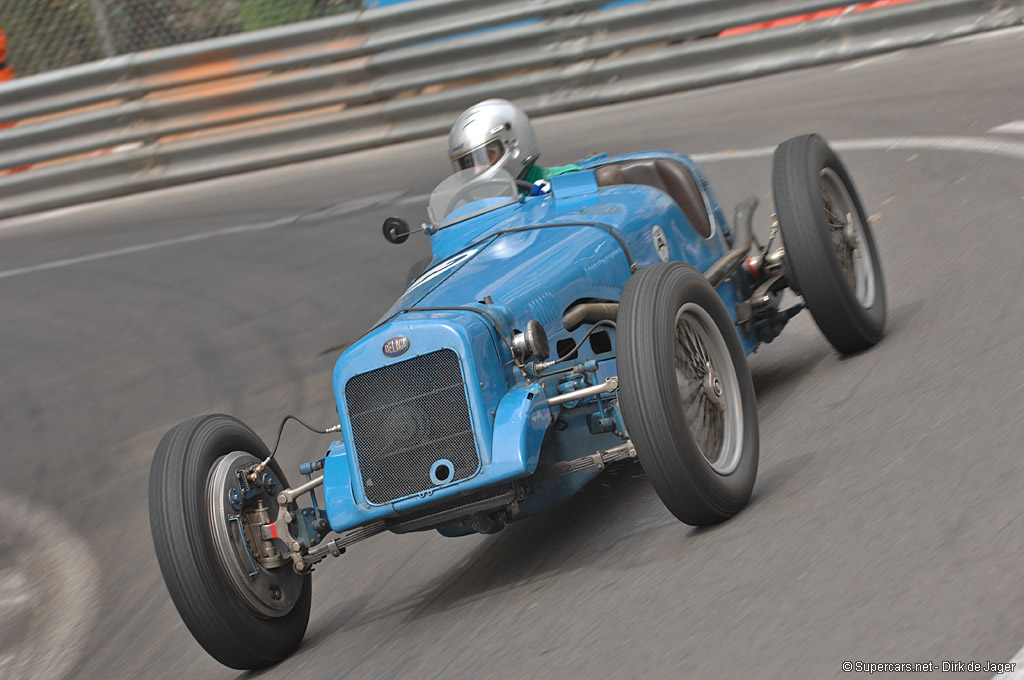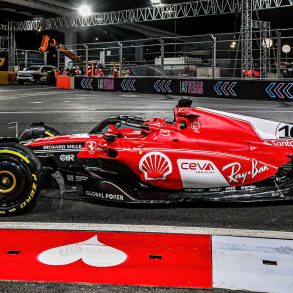Delage 15 S8
Car: Delage 15 S8 / Engine: Inline-8; DOHC, 2 Valves per Cyl; Roots Supercharger / Maker: Delage / Bore X Stroke: 55.8 x 78 mm / Year: 1926 / Capacity: 1,488 cc / Class: Grand Prix / Power: 126.8 kw / 170.0 bhp @ 8000 rpm / Wheelbase: 2495 mm / Track: Front: 1,345 mm; Rear: 1,345 mm / Weight: 748 kg
Louis Delage was born in 1874 in Cognac, south of France. His father was the assistant station master in town. Besides such modest beginning Delage was born with only one eye yet he graduated from Ecole des Arts et Metiers in Angers in 1893. He then moved to Paris and began working with the Turgan-Foy company. Later he accepted a position with Peugeot. He rose to become head of Peugeot’s test and research division but left to start his own company at Levallois-Perret in 1905. Initially the company built cars using engines from Dion-Bouton and Ballot. In 1911 Delage built a new factory in Courbevoie to make their own engines.
Delage had a passion for racing and a competitive edge and in 1913 Rene Thomas won the Grand Prix de France for voiturettes as well as the Indianapolis 500 the following year. His company initial produced relatively inexpensive cars but as time went along they moved up scale and were later to build some of the greatest sports cars of the era and in 1923 he embarked on a program to field cars to the new 2 liter regulations the following year. Delage’s chief engineer at the time , Charles Planchon, was tasked with building a new engine that could comply with these regulations. The result was an engine that had twelve cylinders and twin-overhead camshafts. It was called the 2LCV and was the first practical racing V12. The project was rushed and as a result the car had little success initially. Delage was not a patient man and sacked Planchon and replaced him with his assistant Albert Lory. Their cars finally achieved success at the French Grand Prix in 1925 coming in first and second.
For 1926, a change of formula required the use of 1.5 litre engines and Lory — who had eventually developed the V12 into a winner — took a different approach with the new car, designing a supercharged straight-eight engine. Dual overhead camshafts with two valves per cylinder working together with twin Rootes-type superchargers, producing 170 bhp at 8000 rpm. The cylinder head was integral with the cast iron block, while the crankcase was aluminum. The billet steel crankshaft was supported by nine ball bearings, together with eight roller bearing rods.
After 1925 a riding mechanic was no longer required, though a second seat was still mandatory. The engine sat in a chassis similar to the 2LCV it replaced. Both cars had the same brakes and transmission. Even thought the 2LCV and S8 produced roughly the same horsepower, the new 15 S8 was 25% lighter. There was one other major design flaw however, the exhaust ran along the right hand side of the cockpit and roasted the driver. At the cars first race, the 1926 San Sebastian GP, only one Delage finished (third place) using up 7 drivers in all. The car was then disqualified for using an excess of relief drivers! At Brooklands, a pan of cold water was kept for relief during pit stops. “One could actually hear the boots hissing as they went into [it],” one driver commented. Still, Delage did win their first race of the season that day in England.
Lory went back to the drawing board. For 1927 the exhaust system was moved out of harm’s way, the twin superchargers were replaced with one larger front-mounted blower, the second seat that had been for the mechanic was discarded and the radiator was raked and the engine offset to lower the body, resulting in one of the lowest frontal areas of any GP car for years.
In 1927 the Delage was an instant success winning the Spanish, Italian, French and British Grands Prix. Such was the superiority of the car that none of their main competitors bothered showing up at Monza, leaving the sole Delage with easy victory. The works team was duly crowned European champion. At one point the car, driven by Benoist (who also won the European driver’s championship), completed over 1,400 miles in competition with — it is claimed — never having to raise its hood.
Due to the extensive costs and maintenance of the engine, producing additional cars would have come at considerable expense to Louis Delage who was already considering abandoning motor sports. Thus only four 15 S8s were produced.
When the Delage company dropped out of racing, Robert Benoist was without a job and was appointed manager of the Banville Garage in Paris. In 1929 Louis Chiron drove this same Delage in the Indianapolis 500 mile race, painted French racing blue. Chiron qualified 14th at 107.351 mph, finishing seventh with an average of 87.728 mph. The Delage was the only entrant to finish that was not based on a Miller or Duesenberg.
In the mid-1930s the car due to its reliability proved to be the perfect weapon in the very popular voiturette class. In the hands of Richard Seaman, the then ten year old Delage regularly beat the much more modern Maseratis and ERAs in 1936.
The car had come into his possession through Lord Howe from who it was purchased. Howe it seems had been quite attached to the car and took a little persuading to part with it, but finally agreed to sell, as — ironically enough – he thought that the ERA was the way to go for 1936.
The Delage was brought in to the Ramponi’s workshop, Giulio Ramponi his mechanic proceeded to strip the old car down.
Ramponi described how he modified the car: “Before starting I got full cooperation including the original blue-prints and advice from the designer Albert Lory. I have great respect for him as an engineer and a person.” He began the rebuild on the basis of increasing power whilst also stiffening the chassis and reducing weight. A new front suspension and a larger fuel tank were installed whilst a new five speed gearbox from a V12 Delage was fitted. The chassis was stiffened by the simple means of fitting blocks of wood within the channel sections at the front, which significantly improved the torsional rigidity. Duralumin wheels saved weight, as did a new radiator, whilst the new fuel tank integrated into the rear bodywork and saved a further 90 lbs.
Turning to the engine, the supercharger pressure was increased to 12 lb psi and the valve timing, which was apparently incorrect, was rectified. Higher compression aluminum pistons by Hepworth and Grandage and new valves were also fitted. Altogether Ramponi lightened the car by some 250 pounds while the power was increased from 170 to 195 bhp, and to improve stopping power the brakes were now hydraulically operated, by courtesy of Lockheed. The car now 10 years old was a rocket se to be let loose.
In the early part of the season it looked as though the doubters questioning racing a 10 year old car may have been right. Apart from a win on the Isle of Man against national competition, Seaman and the Delage suffered a series of misfortunes that ran on into the mid season. But later in the year Seaman silenced the doubters, scoring a string of victories over a 15 day period: winning the Coppa Acerbo in Italy, the Prix de Berne in Switzerland, then, back home in England, the JCC 200 at Donington Park. This spectacular run of success propelled Seaman into the Mercedes Benz Grand Prix team for 1937.
Unfortunately the story of Louis delage did not have quite so happy of an ending. By 1935 his company was forced into liquidation, the rights to the Delage name auctioned off to the Delahaye car company. The new owners unceremoniously dismissed Delage with a small pension. Louis Delage found himself in a personal financial crisis made worse by his divorce. He sought solace in his Roman Catholic faith, In 1947, at the age of 73 and living in near poverty, an almost forgotten Louis Delage died.






















